Hallucinogenic plants are diverse flora containing psychoactive compounds that alter perception, emotions, and thought. They have been used in rituals, medicine, and spiritual practices for centuries, offering profound introspective experiences.
What Are Hallucinogenic Plants?
Hallucinogenic plants are flora containing naturally occurring psychoactive compounds that alter perception, thought, and emotional states when consumed. These plants produce unique chemical substances, such as alkaloids and phenethylamines, which interact with the human brain to induce hallucinations, euphoria, or introspective experiences. Common examples include peyote, ayahuasca, and psilocybin mushrooms. They have been used for centuries in shamanic rituals, spiritual practices, and traditional medicine, offering deeper connections to nature and the self. Richard Evans Schultes’ A Golden Guide to Hallucinogenic Plants highlights their diversity and cultural significance, emphasizing their role in human history and modern exploration. These plants remain a fascinating subject of scientific study and personal discovery, bridging the gap between biology, psychology, and spirituality.
Cultural and Historical Significance
Hallucinogenic plants have played a profound role in shaping cultures and traditions worldwide. For centuries, they have been integral to spiritual practices, rituals, and ceremonies, serving as bridges between the physical and spiritual worlds. Ancient civilizations, such as the Maya and indigenous Amazonian communities, revered these plants for their ability to induce visionary states and connect with the divine. Peyote, ayahuasca, and other hallucinogens have been used in shamanic rituals to heal, divine, and guide spiritual growth. Their cultural significance is evident in the works of ethnobotanists like Richard Evans Schultes, who documented their use across civilizations. These plants not only influenced religious practices but also inspired art, storytelling, and philosophical thought, leaving a lasting legacy in human history and continuing to inspire modern spiritual and scientific exploration.
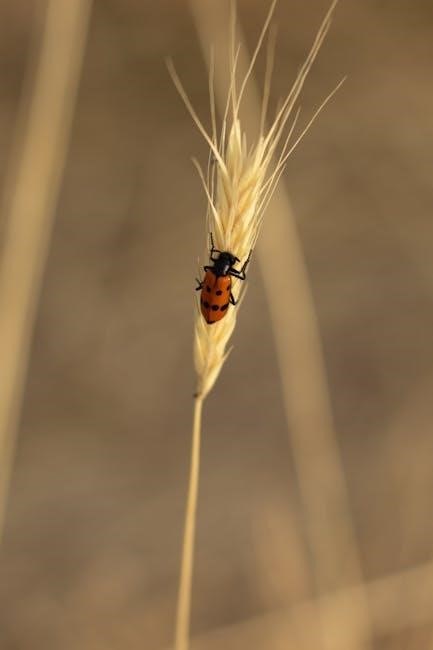
History of Hallucinogenic Plants
Hallucinogenic plants have been used for thousands of years in ancient rituals, ceremonies, and spiritual practices, with evidence of their use found in Maya and other civilizations.
Ancient Use and Rituals
Hallucinogenic plants have been integral to ancient cultures, used in sacred rituals to connect with the divine. The Maya, for instance, employed plants like xtabentum and lancewood in ceremonies to bless ball courts and honor deities. Similarly, archaeological findings in Mexico revealed a 2,000-year-old ceremonial offering containing traces of hallucinogenic Syrian rue and psychoactive blue water lily, alongside human proteins. These plants were often ingested by shamans to induce trance states, facilitating spiritual communication and healing; Rituals involving hallucinogens were deeply symbolic, aiming to bridge the mortal and divine realms. Such practices highlight the reverence with which these plants were regarded, embodying their role in ancient spiritual and cultural life.
Historical Evidence of Hallucinogenic Use
Hallucinogenic plants have left a profound mark on human history, with evidence of their use dating back thousands of years. Archaeological discoveries, such as the unearthing of a 2,000-year-old ceremonial offering in Mexico, reveal traces of hallucinogenic Syrian rue and psychoactive blue water lily. These findings underscore the ancient civilizations’ reliance on such plants for spiritual and ritualistic purposes. Similarly, the Maya civilization incorporated hallucinogenic plants like xtabentum and lancewood into their rituals, using them to bless ball courts and connect with divine forces. Historical records also point to the use of these plants in shamanic practices, where they were believed to facilitate healing and spiritual enlightenment. Such evidence highlights the enduring significance of hallucinogenic plants in human culture and spirituality.
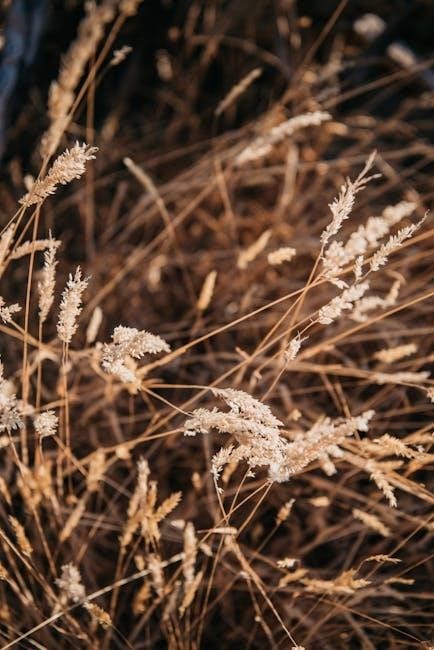
Classification of Hallucinogenic Plants
Hallucinogenic plants are classified based on their active compounds and botanical families. Species like DMT-containing plants and Ayahuasca fall into distinct categories, with distributions spanning tropical to arid regions globally.
Types Based on Active Compounds
Hallucinogenic plants are categorized by their primary psychoactive compounds, which dictate their effects. Key compounds include mescaline (found in Peyote), psilocybin (in psychedelic mushrooms), and DMT (in plants like Psychotria viridis). Other notable compounds are ibogaine (from Tabernanthe iboga) and harmine (in Ayahuasca). These compounds interact with the brain’s serotonin system, producing altered states of consciousness. Mescaline induces introspective experiences, while psilocybin creates vivid visuals. DMT is known for intense, short-lived journeys, often described as otherworldly. Ibogaine, traditionally used in initiatory rites, offers profound self-reflection. Harmine, a MAOI, potentiates DMT in Ayahuasca brews, leading to extended visionary states. This chemical diversity highlights the rich pharmacological variety within hallucinogenic plants, each offering unique psychological and physiological effects. Their classification by active compounds aids in understanding their roles in rituals, medicine, and personal growth.
Botanical Families and Distribution
Hallucinogenic plants belong to diverse botanical families, each with unique distribution patterns. The Cactaceae family includes Peyote (Lophophora williamsii), native to arid North American regions. The Convolvulaceae family features Turbina corymbosa, commonly found in tropical areas. Rubiaceae encompasses Psychotria viridis, integral to Amazonian Ayahuasca rituals. Apocynaceae includes Tabernanthe iboga, indigenous to Central Africa. These plants thrive in varied climates, from deserts to rainforests, reflecting their ecological adaptability. Their distribution often aligns with cultural use, as civilizations have cultivated them for medicinal and spiritual purposes. This botanical diversity underscores the global significance of hallucinogenic plants, highlighting their role in both traditional practices and modern explorations of consciousness. Their widespread presence indicates a deep-rooted connection between humanity and nature.
Effects on the Human Mind and Body

Hallucinogenic plants alter perception, thought, and mood through psychoactive compounds like psilocybin, DMT, and mescaline. They can cause vivid visuals, sensory distortions, and profound introspection, while also increasing heart rate and blood pressure.
Psychological and Physiological Effects
Hallucinogenic plants induce profound psychological effects, including altered perception, vivid visuals, and sensory distortions. They can evoke deep introspection, emotional shifts, and spiritual experiences. Physiologically, these plants often increase heart rate, blood pressure, and body temperature. Compounds like psilocybin, DMT, and mescaline interact with serotonin receptors, altering brain activity. Some users report heightened creativity and emotional insight, while others may experience anxiety or panic, especially in unfamiliar settings. The effects vary based on the plant, dosage, and individual tolerance. Responsible use is crucial to navigate these intense experiences safely. The combination of psychological and physiological impacts underscores the potent influence of hallucinogenic plants on both mind and body, making them significant in therapeutic and spiritual contexts.
Potential Risks and Health Considerations
Hallucinogenic plants can pose significant risks, including allergic reactions, mental instability, and unpredictable physiological responses. Some species, like Atropa belladonna, are highly toxic and can cause severe health complications. The psychoactive compounds in these plants may trigger anxiety, paranoia, or psychosis in susceptible individuals. Proper identification and dosage are critical to avoid adverse effects. Misuse can lead to long-term psychological damage or dependency. Additionally, the legal status of these plants varies, and improper use may result in legal consequences. Consulting with medical or botanical experts is essential before engaging with hallucinogenic plants to ensure safe and informed use. Responsible handling is crucial to mitigate risks and avoid harmful outcomes.
Safety and Responsible Use
Responsible use of hallucinogenic plants requires proper identification, dosage, and awareness of legal and health risks. Prioritizing set, setting, and expert guidance ensures safe experiences and minimizes harm.
Guidelines for Safe Usage
Safe use of hallucinogenic plants requires careful planning and awareness. Start by consulting experts or trusted sources to ensure proper identification and dosage. Always prioritize legal compliance and health considerations, as misuse can lead to harm. Begin with small amounts to assess tolerance and avoid overwhelming experiences. Choose a calm, familiar environment to minimize anxiety or discomfort. Avoid mixing hallucinogens with other substances, as interactions can be unpredictable. Have a trusted individual present to provide support if needed. Stay hydrated and maintain a balanced physical state to enhance safety. Be mindful of potential health risks, especially for individuals with pre-existing conditions. Respect cultural and traditional contexts to ensure responsible and ethical use.
Importance of Set and Setting
The concept of “set and setting” is crucial when working with hallucinogenic plants. Set refers to an individual’s mindset, including their intentions, mood, and expectations, while setting encompasses the physical and social environment. A positive set and setting can enhance the experience, fostering introspection and spiritual growth. Conversely, a negative or unstable environment may lead to discomfort or anxiety. It is essential to approach hallucinogenic plants with a clear and respectful mindset, ensuring the setting is safe, comfortable, and free from distractions. This balance helps minimize risks and maximizes the potential for meaningful outcomes. Always prioritize a calm, familiar environment and a positive mental state to ensure a safe and transformative experience with hallucinogenic plants.
Legal Considerations
Hallucinogenic plants often face legal restrictions due to their psychoactive properties. Laws vary globally, with some plants classified as controlled substances. Responsible use requires adherence to local regulations to avoid legal consequences.
Global Legal Status Overview
Hallucinogenic plants are subject to varying legal statuses worldwide, with many classified as Schedule I drugs under international treaties. Their legal status often reflects cultural attitudes and historical use. In some countries, like Peru, plants such as ayahuasca are permitted for traditional or religious use. European nations have diverse laws, with certain hallucinogenic plants decriminalized. Law enforcement typically focuses on preventing recreational misuse while allowing religious or therapeutic use under strict regulations. The global legal landscape is complex, shaped by public health concerns and traditional practices.
Regional Laws and Regulations
Regional laws governing hallucinogenic plants vary significantly, reflecting cultural, historical, and political contexts. In the United States, some states have decriminalized psilocybin mushrooms, while others maintain strict prohibitions. South American countries like Peru and Brazil permit traditional ayahuasca use in religious ceremonies. European nations exhibit diverse approaches, with the Netherlands tolerating certain psychoactive plants under specific conditions. Australia and Asia generally enforce stricter laws, with severe penalties for possession or distribution. The legal framework often distinguishes between recreational and religious or therapeutic use, influencing enforcement priorities. Understanding regional regulations is crucial for anyone exploring hallucinogenic plants, as legal consequences vary widely depending on location.
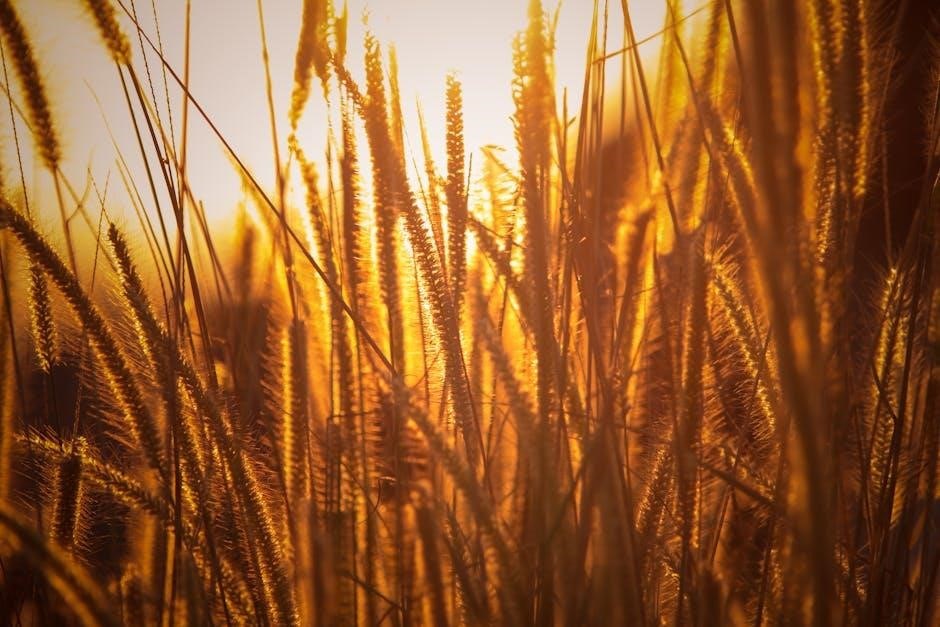
Practical Guide to Using Hallucinogenic Plants
A practical guide emphasizes safe preparation, proper dosage, and mindful consumption. Start with small amounts, research the plant’s effects, and ensure a safe, supportive environment for use.
Preparation Methods and Dosage
Preparation methods for hallucinogenic plants vary widely, from brewing teas to chewing raw leaves or infusing in beverages. Proper dosage is critical to avoid overwhelming effects. Start with minimal amounts, such as 1-2 grams for mild experiences, and adjust based on tolerance. Ayahuasca, for example, is typically prepared in a ceremonial brew, while Peyote is often ingested as dried buttons. Timing is also essential, as effects may take 30 minutes to several hours to manifest. A trusted guide or experienced practitioner can provide valuable insights. Modern practices sometimes involve encapsulation for convenience. Always prioritize safety and research the specific plant’s requirements to ensure a positive and controlled experience.
Cultivation and Care Tips
Cultivating hallucinogenic plants requires specific care tailored to each species. Peyote thrives in arid, alkaline soils and full sun, while Ayahuasca prefers humid, tropical climates. Ensure soil pH matches the plant’s needs, typically between 7.0-8.5 for cacti like Peyote. Water sparingly to avoid root rot, allowing soil to dry completely between waterings. Fertilize minimally, using low-nitrogen mixes to promote healthy root growth. Pruning dead segments can enhance plant health and encourage new growth. Propagation methods vary; Peyote can be grown from seeds or cuttings, while Ayahuasca is often propagated via stem cuttings. Provide adequate space for each plant to prevent overcrowding and pest issues. Regular monitoring of temperature, humidity, and light exposure ensures optimal growth conditions. Research specific requirements for each species to maintain their unique needs and ensure successful cultivation.

Modern Applications and Research
Hallucinogenic plants are gaining attention in modern medicine for treating mental health disorders and pain. Research focuses on their therapeutic potential, bridging ancient traditions with contemporary scientific advancements and innovation.
Therapeutic Uses and Scientific Studies
Research on hallucinogenic plants has revealed promising therapeutic potential, particularly for mental health disorders. Studies highlight their effectiveness in treating depression, anxiety, and PTSD. Psilocybin, found in certain mushrooms, has shown remarkable results in clinical trials, offering long-term relief for patients. Similarly, ayahuasca has been studied for its anti-addictive properties, helping individuals overcome substance abuse. These plants’ active compounds, such as DMT and psilocybin, interact with serotonin receptors, promoting neural plasticity and emotional healing. Scientific investigations are also exploring their role in pain management and end-of-life care, providing comfort to terminally ill patients. Modern medicine is increasingly recognizing the value of these plants, bridging ancient traditions with contemporary treatments to address unmet medical needs.
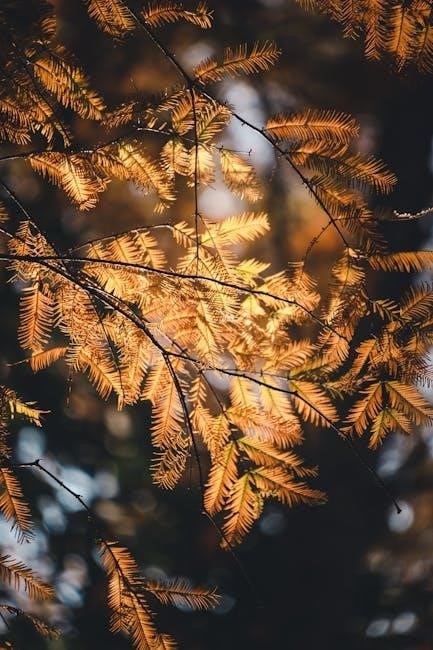
Role in Contemporary Medicine
Hallucinogenic plants are gaining traction in contemporary medicine, with active compounds like psilocybin and DMT being studied for their potential to treat mental health disorders. Clinical trials have demonstrated significant benefits in addressing treatment-resistant depression, anxiety, and PTSD. Psilocybin-assisted therapy has shown promise in reducing symptoms of existential distress in terminally ill patients. Researchers are also exploring these plants’ potential in combating addiction, with studies indicating reduced cravings and long-term sobriety. Modern medicine is increasingly recognizing the therapeutic value of these plants, leading to FDA breakthrough designations for psilocybin-based treatments. As scientific understanding grows, hallucinogenic plants are becoming integral to innovative, evidence-based approaches in mental health care, offering hope for patients who have not responded to conventional therapies.
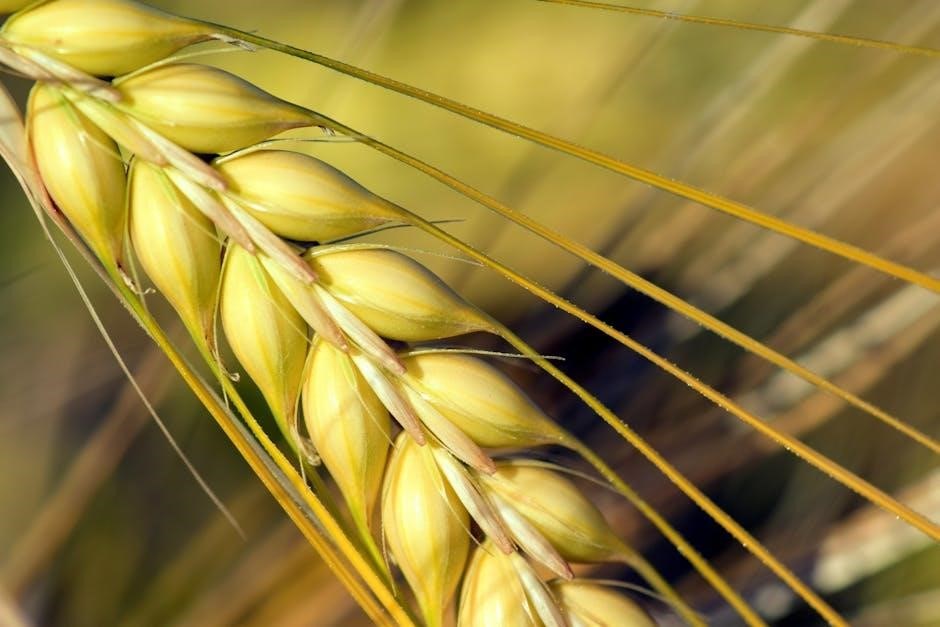
Personal and Spiritual Growth
Hallucinogenic plants facilitate introspection, self-discovery, and spiritual exploration, enabling users to confront deep emotions and thoughts, fostering personal transformation and a deeper connection to oneself and the universe.
Use in Introspection and Self-Discovery
Hallucinogenic plants have long been utilized in controlled settings to facilitate deep introspection and self-discovery. By altering perception, these plants enable individuals to explore subconscious thoughts and emotions, often leading to profound personal insights. Users report confrontations with buried memories, fears, and desires, fostering a deeper understanding of oneself. The altered state of consciousness induced by these plants can dissolve rigid mental frameworks, allowing for novel perspectives on life and identity. Many cultures incorporate these plants into rituals designed to promote spiritual and emotional healing. The structured use of hallucinogens, often under guidance, can catalyze transformative experiences, aiding individuals in overcoming psychological barriers and embracing self-awareness. This therapeutic potential highlights their enduring role in personal growth and introspective practices.
Cultural Practices for Spiritual Growth
Hallucinogenic plants have been integral to cultural and spiritual practices across civilizations, fostering profound connections to the divine and nature. In many indigenous traditions, these plants are considered sacred tools for spiritual growth, enabling individuals to transcend ordinary consciousness and access deeper truths. Shamans and spiritual leaders often guide their use in rituals, ensuring safe and meaningful experiences. For instance, the Maya used hallucinogenic plants in ceremonies to bless ball courts, while Amazonian cultures employ ayahuasca in communal healing rituals. These practices emphasize introspection, self-awareness, and harmony with the universe. By bridging the physical and spiritual realms, hallucinogenic plants have historically played a vital role in cultural practices aimed at enlightenment and spiritual elevation, offering a pathway to inner healing and cosmic understanding.

Directory of Notable Hallucinogenic Plants
Hallucinogenic plants include diverse species like peyote and ayahuasca, known for their psychoactive compounds and cultural significance. This directory explores their origins, properties, and traditional uses in rituals and medicine.
Peyote (Lophophora williamsii)
Peyote, a small, spineless cactus native to the southwestern United States and northern Mexico, is deeply rooted in Native American spirituality. Its scientific name, Lophophora williamsii, reflects its botanical classification. The plant contains psychoactive alkaloids, primarily mescaline, which induces vivid hallucinations and introspective experiences. Traditionally, peyote has been central to rituals of the Native American Church, fostering spiritual connection and communal healing. Its use is legally protected for religious purposes in the U.S., highlighting its cultural significance. Peyote grows in arid environments, producing button-like growths that are harvested for ceremonial use. This plant bridges the natural and spiritual worlds, offering profound experiences for those who consume it respectfully and ceremoniously.

Ayahuasca (Banisteriopsis caapi)
Ayahuasca, a powerful hallucinogenic brew, is derived from the vine Banisteriopsis caapi and other plants containing DMT. Originating in the Amazon, it has been central to shamanic rituals for centuries. Shamans use it to communicate with spirits, heal, and divine. The brew combines B. caapi with plants like Psychotria viridis, enhancing its psychoactive effects. Ayahuasca induces intense visuals, introspection, and emotional release, often accompanied by physical sensations like nausea. Its use is deeply rooted in cultural and spiritual practices, promoting self-discovery and healing. Modern interest has led to its global use in retreats and therapeutic contexts, highlighting its potential for personal growth and mental well-being. Ayahuasca’s profound effects make it a revered tool for spiritual and emotional transformation.
DMT-Containing Plants
DMT-containing plants are a group of flora rich in N,N-Dimethyltryptamine, a potent hallucinogen. These plants, such as Psychotria viridis and Diplopterys cabrerana, are traditionally used in shamanic rituals. When combined with Banisteriopsis caapi, they form ayahuasca, a brew that induces vivid visuals and deep introspection. DMT is known for its intense, short-lived effects, often described as immersive and transformative. These plants have cultural significance in Amazonian societies, where they are used for healing and spiritual exploration. Modern research highlights their potential therapeutic benefits, while enthusiasts explore their ability to access other dimensions of consciousness. DMT-containing plants offer a gateway to profound psychological and spiritual experiences, making them a focal point in both traditional and contemporary practices.